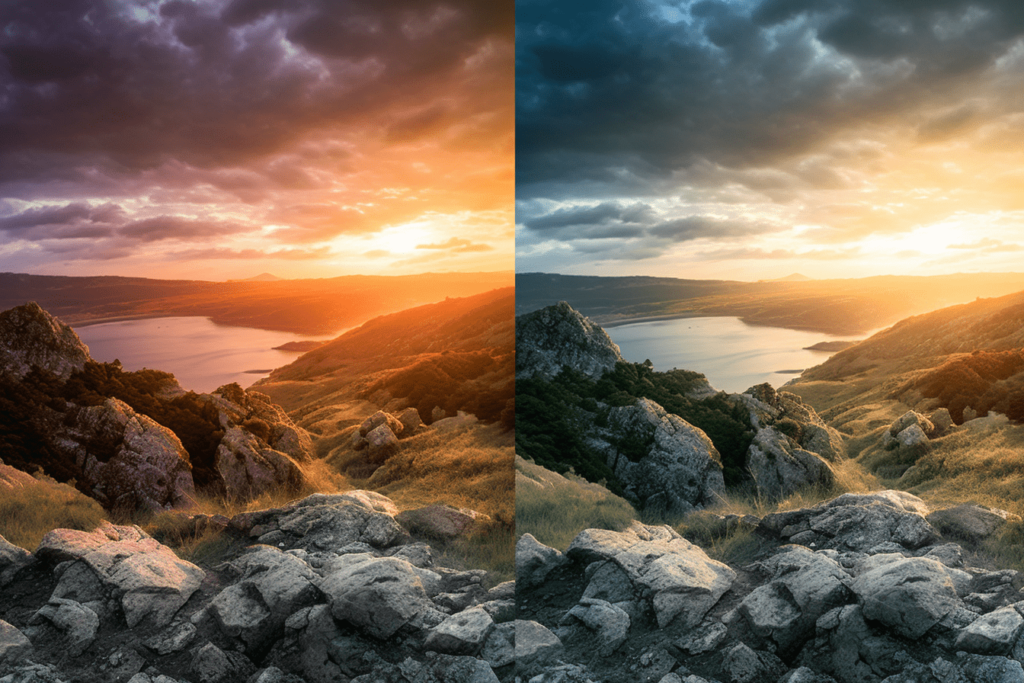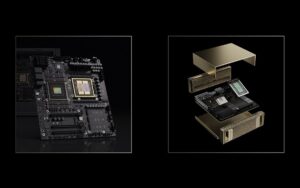
Some technologies related to image reproduction, when well implemented and enjoyed on the device that really manages to perform as they were designed, establish a cathartic effect. HDR achieves this effect.
Due to the cost, many people have not yet had contact with HDR reproduction that truly does justice to what this technology can deliver. But, if you are reading this article, If you have experienced this technology in a truly real way, you know that it is not an exaggeration. HDR really does create that “wow” effect when watching or playing content that supports it.
Talking about HDR means delving into a subject with many nuances, fine details and a soup of alphabets and jargon. In this article, I have separated 3 facts about HDR that you need to know. Let’s go!
What is HDR?
First of all, it is important to establish what HDR actually means. For some years now, the term has been used in the world of monitors, TVs and screens on devices such as smartphones, but its origins lie in the world of photography.
In photography, HDR means a way to capture more detail in the brightest and darkest elements. By expanding the dynamic range, it delivers what the acronym HDR itself means: High Dynamic Range. An alternative to SDR, which is narrow band.
For this high dynamic range to occur, the captured scene is recorded at different exposure levels – some underexposed, others overexposed, as well as records with an average exposure. By combining, via software, this “salad” of records at different exposures, the dynamic range is expanded, raising the perception and definition between the darkest and lightest parts.

Regardless of whether it is in photography or in the reproduction of video content, the purpose of HDR, by expanding the dynamic range, is to reproduce a range of tones closer to the original scene, capturing it more faithfully.
However, just like in photography, the goal is not always to convey the scene as realistically as it was seen. Color grading techniques are used to apply an aesthetic that is in tune with the artistic intention of the content.

That’s why, in the famous HDR test videos used to test TVs, the images often have vivid, striking coloration. In this case, the idea is not necessarily to show a sunset exactly as it is in reality, but rather to add artistic value to the image.
HDR aims to achieve this entire aesthetic by capturing the full range between light and dark, which, when combined with other panel characteristics, delivers a visually mesmerizing image.
1) Peak Brightness: Beware the Numbers Trick
When we talk about HDR on displays, one of the most publicized and emphasized specifications is peak brightness. I recently purchased the iPad Pro M4, and among the specifications that Apple discloses about the product’s display, it mentions a peak brightness of up to 1600 nits in HDR playback. Some screens promise even more impressive numbers, such as the X955from TLC. A Mini-LED model that promises 5,000 nits.

Many people may assume that this reported peak brightness refers to a measurement considering 100% of the panel, but this is not the case. These numbers are based on measurements taken on small areas of the screen. For example, in the Tom’s Guide test, which used professional equipment to measure peak brightness, the iPad Pro M4 achieved 1510 nits when considering an area of 40% of the panel. By expanding this area, peak brightness tends to be lower.
This is one of the reasons why entry-level TVs and monitors that promise a peak brightness that is already considered low for HDR, in the range of 300 to 400 nits, fail to deliver truly impressive results in HDR playback. If the manufacturer claims a peak brightness of 400 cd/m², you can be sure that, in most cases, this value was reached in a very small part of the panel during the measurement.
This image below from Dolby makes this difference very clear:

2) Color space coverage is important

There is no point in focusing only on brightness. In order for HDR to “shine” in all its magnitude, it also needs broad coverage in “understanding” colors. Therefore, it is very important to consider the color space, in percentage terms, that the screen can map.
For the reproduction of film and series content, an important metric is how much of the DCI-P3 color space the panel can map. The higher the percentage, the better. Currently, many monitors and TVs can already map 98, 99%, 100% of this color space.
If you want to be even more discerning – and are willing to pay for it – you can also pay attention to the Delta E value, which is directly related to color accuracy. In this regard, what matters are lower values.
Compatibility with various HDR standards is also valid, especially Dolby Vision, due to its dynamic mapping feature. Learn more about the differences between HDR 10, Dolby Vision and HLG by clicking here.
2) Overall, going with OLED elevates your HDR experience

I know that bringing up the OLED topic is an opportunity to raise awareness for those who always raise the alarm about panel degradation in the medium and long term. While more and more people are experiencing this technology, many are still understandably wary of purchasing a device with this technology.
However, for those who are willing to try it, I can say that there is no turning back. Watching something in (real) HDR on an OLED screen provides an impressive experience, impossible to replicate with the HDR + LED LCD combination.
I mention the set because LED technologies can even deliver more brightness than some OLED panels, but the tiebreaker is contrast, which is fundamental for the result in HDR. Remember, the principle of HDR is the wide dynamic range, mapping darker and lighter zones. The contrast of OLED ends up adding a lot to the result of content reproduction. Mini-LED LCD screens also usually deliver good results.

So if you’re looking for the best possible HDR scenario, in terms of image reproduction, then a good OLED panel is the way to go. However, don’t dismiss everything that isn’t OLED. Some LED panels implemented in TVs and monitors are very good.
Also, don’t make the mistake of labeling OLED as “problematic”, comparing it to the initial standards of the technology, disregarding the evolution that has been taking place. One innovation that should gain momentum in the coming years is the Tandem OLEDwhich is the OLED with more than one layer. By combining layers, this type of panel aims to overcome some of the technology’s shortcomings, such as brightness level, and also improve the panel’s lifespan, further reducing the chances of permanent image retention.

Tell us about your experience with TVs and monitors. Have you ever watched or played something with HDR enabled? What do you think of this technology? Comment below.
Source: https://www.hardware.com.br/noticias/3-fatos-sobre-hdr.html


